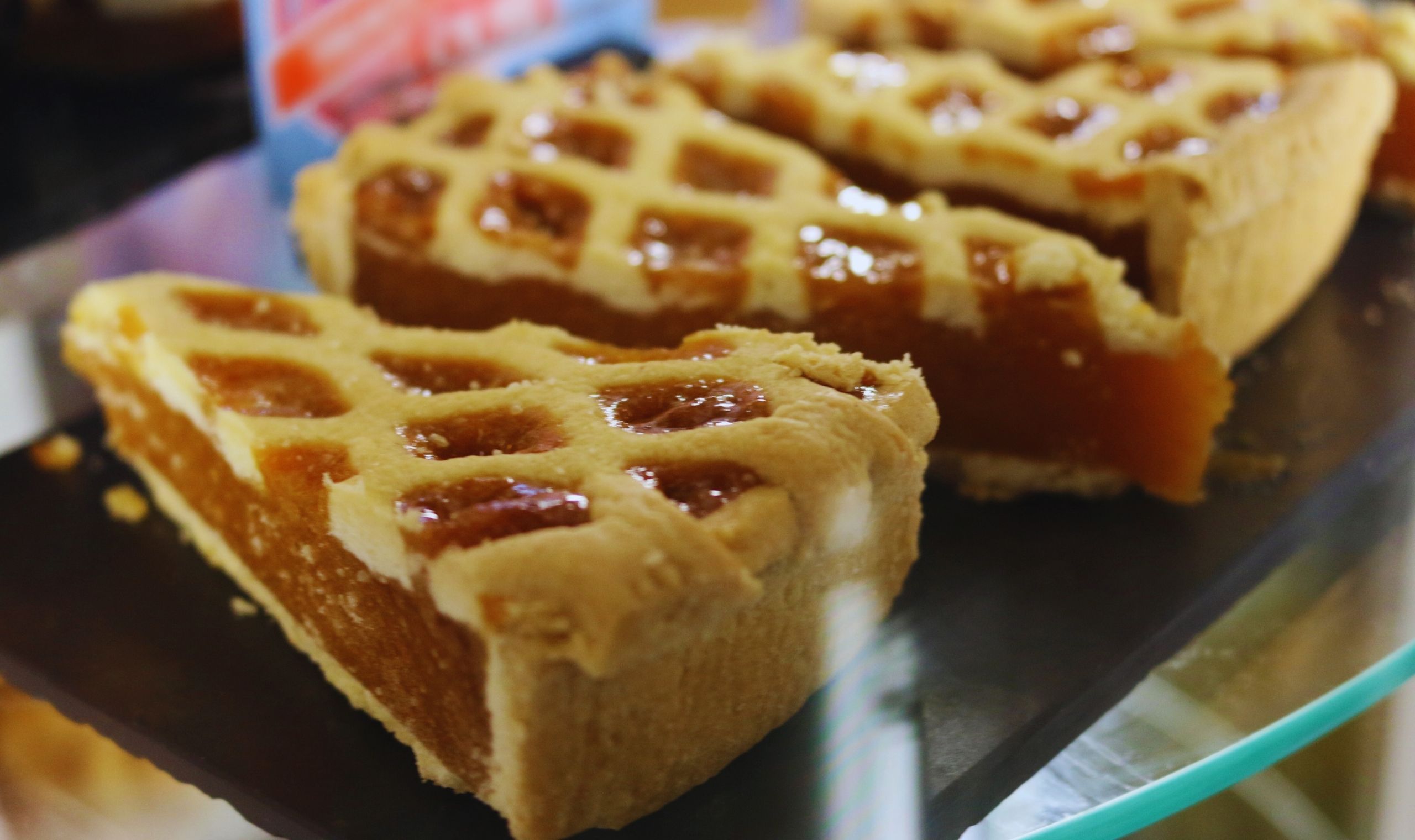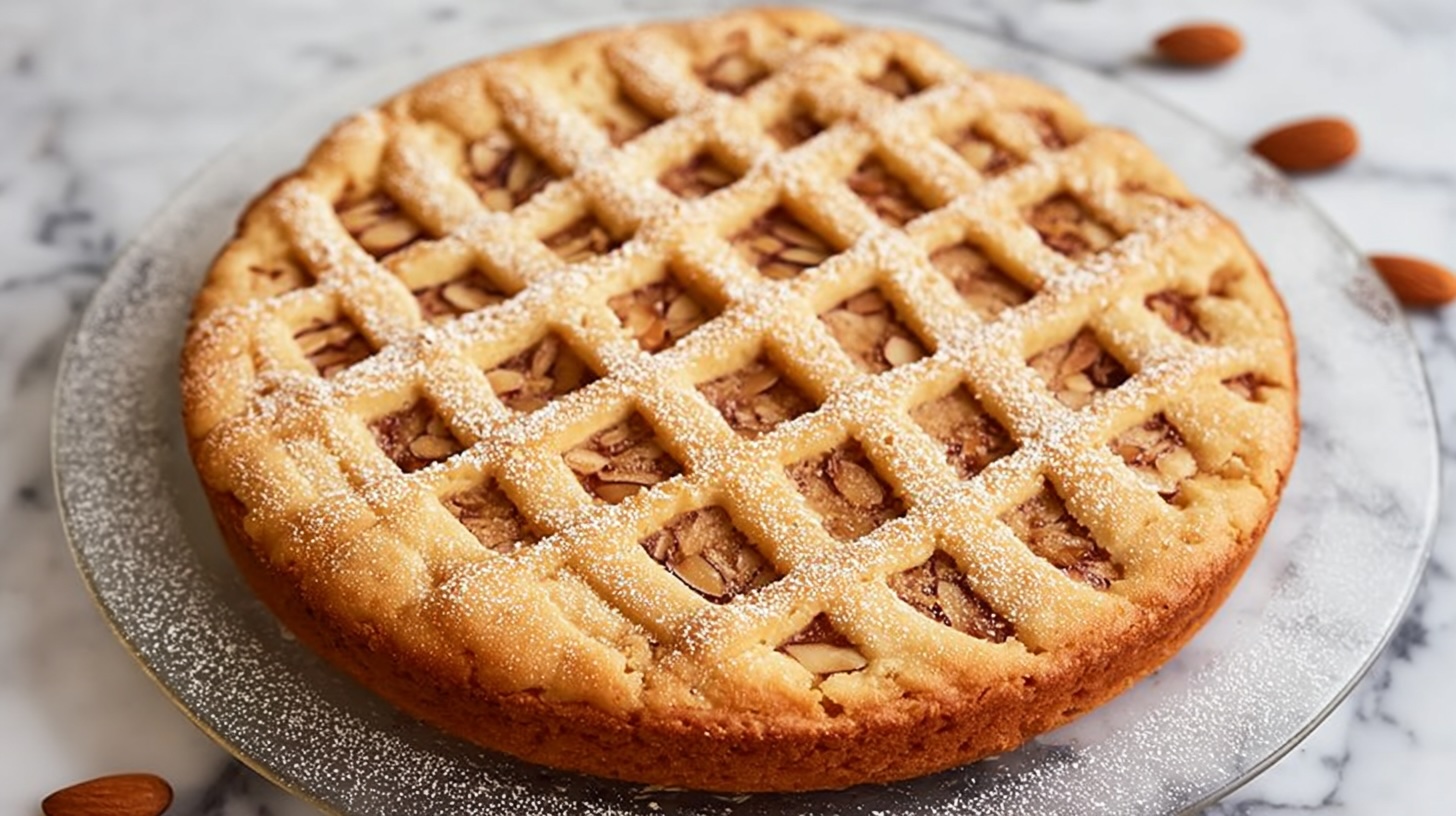Nastar: When Dutch Pastry Met Tropical Pineapple
Nastar is one of those small but mighty biscuits that seem to have walked straight out of your grandmother’s biscuit tin and into the centre of a nation’s heart. Golden, buttery, sweet with a mischievous hint of tangy pineapple – it’s the sort of treat that manages to taste both luxurious and comfortingly homemade. If you’ve ever bitten into one and felt like you’ve just been hugged by a tropical breeze, you know exactly what I mean. But behind this bite-sized delight lies a surprisingly rich story of colonial kitchens, spice routes, and generations of festive nostalgia.
Let’s start at the beginning, or at least somewhere near it. Nastar (short for nanas tart – literally “pineapple tart” in Indonesian and Malay) didn’t actually begin its life in the tropics. Its pastry DNA can be traced back to Dutch colonial influence in Indonesia. Back in the 17th century, Dutch settlers brought with them all sorts of European baking traditions: buttery shortcrusts, jams, fruit preserves. In Europe, apricots and apples were the standard fillings for these crumbly tarts. But when those settlers found themselves thousands of miles away in a land where the air was humid, the spice was abundant, and apples were as exotic as snow, they had to adapt. Pineapples, which were plentiful and gloriously fragrant, became the local substitute. Thus, a new hybrid was born – one that combined Dutch pastry technique with tropical fruit flamboyance.
Over time, the pineapple tart became more than just a tasty relic of colonial fusion. It took on a life of its own, especially across Indonesia, Malaysia, and Singapore. The pastry evolved into small, thumb-sized bites of joy – buttery dough encasing sticky, caramelised pineapple jam. Different regions gave the biscuit their own spin. In Indonesia, nastar tends to be soft, crumbly, and shaped like tiny domes brushed with a shiny egg glaze. In Malaysia and Singapore, pineapple tarts might be rolled, pressed into flowers, or cut into tiny squares. Some versions are closed, others are open-faced with that glistening golden jam peeking through, like a little sun in pastry form.
Come festive season, nastar becomes almost compulsory. During Eid al-Fitr (known locally as Lebaran), you’ll find tins of nastar stacked proudly on coffee tables, offered to guests who stop by in their best clothes to exchange greetings. In Chinese-Malay households, pineapple tarts are also a must-have during Lunar New Year. Pineapples, in Chinese culture, symbolise prosperity and good fortune – a linguistic twist of fate because the Hokkien word for pineapple, ong lai, sounds like “wealth comes.” So, imagine an entire region munching pineapple tarts not just because they’re delicious but because they’re practically edible good luck charms.
What really makes nastar special isn’t just its festive symbolism, though that certainly adds to the magic. It’s that perfect textural play between buttery crumble and jammy chew. The pastry melts in your mouth before you can even register its sweetness, and then comes that deep, tangy pineapple hit – not the bright, fresh kind, but the slow-cooked, spiced, almost caramelised version that tastes like tropical sunshine reduced to its most concentrated form. There’s something strangely emotional about it. Maybe it’s because nastar feels both indulgent and humble. It’s the sort of thing that never tries too hard. It just sits there in its little paper cup, looking innocent, until you realise you’ve eaten eight of them without blinking.
And then there’s the making of nastar – a ritual as soothing as it is slightly maddening. The pineapple jam isn’t something you can whip up in a hurry. It has to be cooked slowly, stirring constantly, until the liquid evaporates and what’s left is a sticky, amber mass of concentrated flavour. Some add cloves or cinnamon for warmth; others swear by lime juice to balance the sweetness.
Then comes the dough – typically made with butter, egg yolks, flour, and powdered milk. It’s delicate and soft, the kind of dough that demands a gentle hand and no impatience. Too much mixing, and it loses that crumbly, melt-in-your-mouth charm. The assembly process often becomes a family affair, with children helping to roll the tiny balls or place the jam inside. The kitchen fills with the smell of caramelised fruit and butter, which, frankly, should be bottled and sold as the scent of happiness.
Across the region, you’ll find variations that tell stories of geography and taste. In Java, nastar sometimes comes with a bit of cheese mixed into the dough, a curious but brilliant addition that gives a slightly savoury undertone. In Malaysia, there are versions shaped like pineapples themselves, complete with green leaves piped on top. And in Singapore, the Peranakan influence brings intricate flower-shaped tarts, each petal brushed with a golden glaze so precise it could rival fine jewellery. Even within Indonesia, different families will swear their recipe is the real one. Some use margarine for a lighter texture, others insist only butter will do. Some like the jam to be just barely sticky, others prefer it dark and chewy. In the end, everyone’s nastar is slightly different – and that’s part of its charm.
Pairing nastar with drinks is a surprisingly delightful game. The buttery pastry naturally calls for something that can cut through the richness. A strong black tea does wonders – think of a fragrant Darjeeling or even a smoky Lapsang Souchong if you like your afternoons dramatic. Coffee works too, especially a dark roast that complements the caramel notes of the pineapple filling. In Indonesia, it’s common to nibble nastar with kopi tubruk – thick, unfiltered coffee brewed with sugar – a pairing that could jolt even the sleepiest soul into action. If you want to go a little posh, sparkling wine or Prosecco adds a refreshing contrast; the bubbles lift the buttery heaviness, making nastar feel almost sophisticated. Almost.
Other foods to pair with nastar depend on the occasion. During Eid, nastar often shares the table with other traditional cookies like kastengel (cheese sticks) and putri salju (snowball cookies coated in icing sugar). It sits comfortably next to savoury snacks, too – spiced nuts, krupuk crackers, or even small spicy empanadas. The contrast between sweet and salty is part of what keeps people reaching for just one more. Nastar also makes a perfect companion to fruit platters or even cheese boards – its sweet tanginess pairs beautifully with aged cheddar or creamy brie. Yes, you read that right: pineapple tart and brie. A match that shouldn’t work but somehow does, like socks and sandals on an Italian beach.
As for health benefits, well, let’s not pretend nastar is a health food. It’s buttery, sugary, and gloriously calorific. But if we squint a little, there are some redeeming qualities. Pineapples are rich in vitamin C, bromelain (a natural enzyme that aids digestion), and antioxidants. So, technically, you could argue nastar helps your immune system and your gut. The pastry’s eggs and butter bring in a bit of protein and fat for energy – useful if you’re facing a long day of social visits during festive season. Of course, moderation is key. Too many nastars and you might need a nap, or a long walk, or both. But let’s be honest – they’re too small to count calories anyway.
Finding nastar outside Southeast Asia used to be a challenge, but globalisation (and the diaspora) has made it easier. In London, you’ll find jars of pineapple tarts in Indonesian or Singaporean shops around Edgware Road or Chinatown, especially near festive periods. In the Netherlands, nastar has made a nostalgic comeback among people tracing their colonial culinary roots. Online, countless bakers now ship nastar worldwide, often dressed up in cute tins and boutique packaging. But the best place to find nastar is still in someone’s home kitchen, preferably one where there’s too much laughter, too little space, and at least one aunt yelling about overbaking.
Nastar Recipe
So how do you make it? Brace yourself for a bit of patience and a lot of butter.
You’ll need fresh ripe pineapples – grated, not blended – because you want that fibrous texture. Cook them in a pan over low heat with sugar, a stick of cinnamon, and a couple of cloves if you like a spiced twist. Keep stirring. This part takes ages, sometimes an hour or more, until the liquid evaporates and the jam thickens into a glossy, sticky ball. It should smell like tropical caramel. Let it cool completely before using.
For the dough, beat together butter, icing sugar, and egg yolks until pale and fluffy. Add plain flour, a little cornflour, and powdered milk – the secret ingredient that gives nastar its delicate crumb. Mix gently until the dough comes together. If it feels too sticky, chill it briefly. Now, roll small balls of dough, flatten each one, and spoon in a tiny bit of pineapple jam. Fold and seal it carefully, shaping into small ovals or rounds. Brush each with egg yolk for that irresistible golden glaze.
Bake at around 160°C until the tops are shiny and lightly golden – about 20 minutes, depending on your oven. The smell will test your willpower. Once baked, let them cool completely before storing them in airtight jars, though good luck keeping them that long. They tend to vanish mysteriously, often in pairs, with no one admitting guilt.
Some bakers like to get creative. Try adding grated cheese to the dough for a slightly savoury note, or roll the tarts in desiccated coconut before baking for extra texture. You can also experiment with spices in the jam – nutmeg, star anise, even a splash of rum if you’re feeling particularly festive.
When served with tea on a lazy afternoon or handed around during celebrations, nastar carries with it the warmth of family, memory, and a bit of history. It’s a sweet reminder that food travels, adapts, and never really loses its soul. From Dutch pies to Indonesian tarts, from colonial kitchens to modern cafes, nastar has survived the centuries without needing a rebrand. It remains what it always was – small, golden, slightly addictive, and utterly charming. A biscuit that doesn’t shout for attention but ends up stealing the show anyway.



